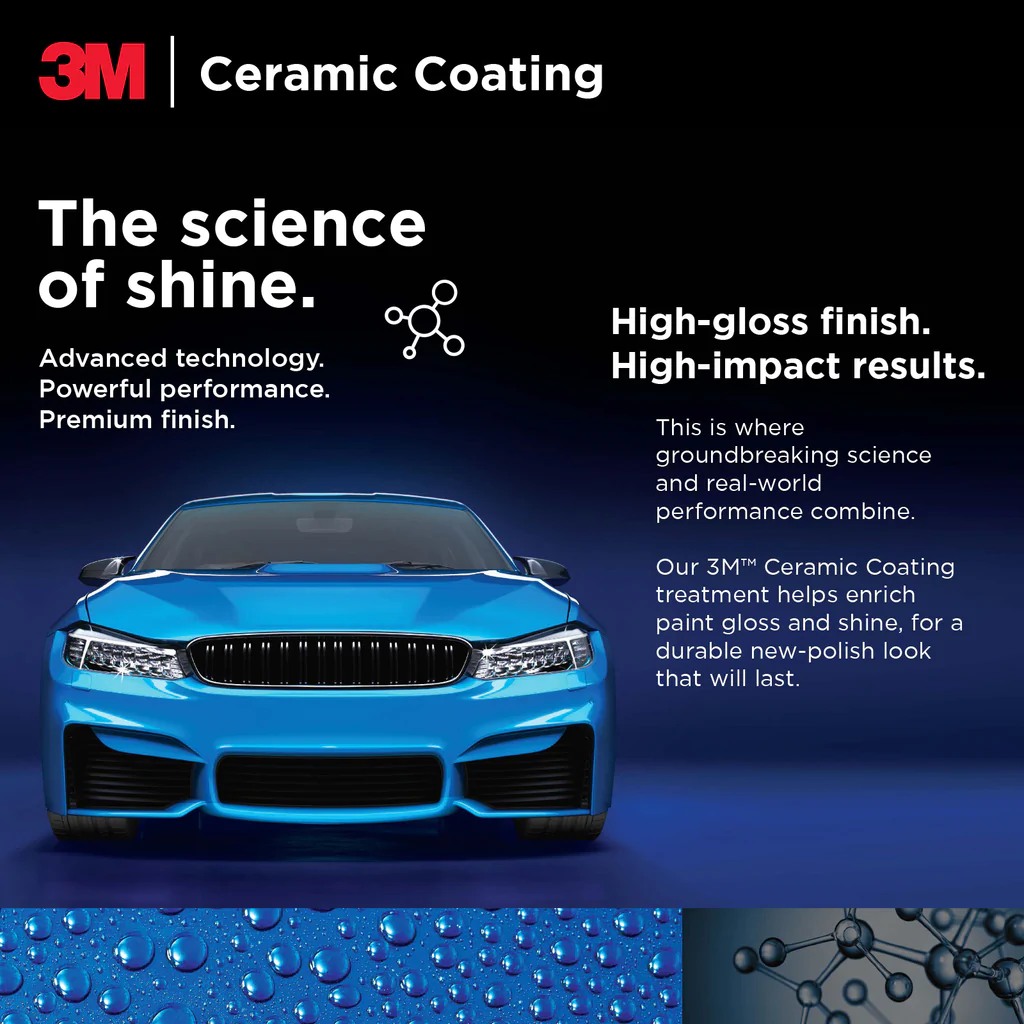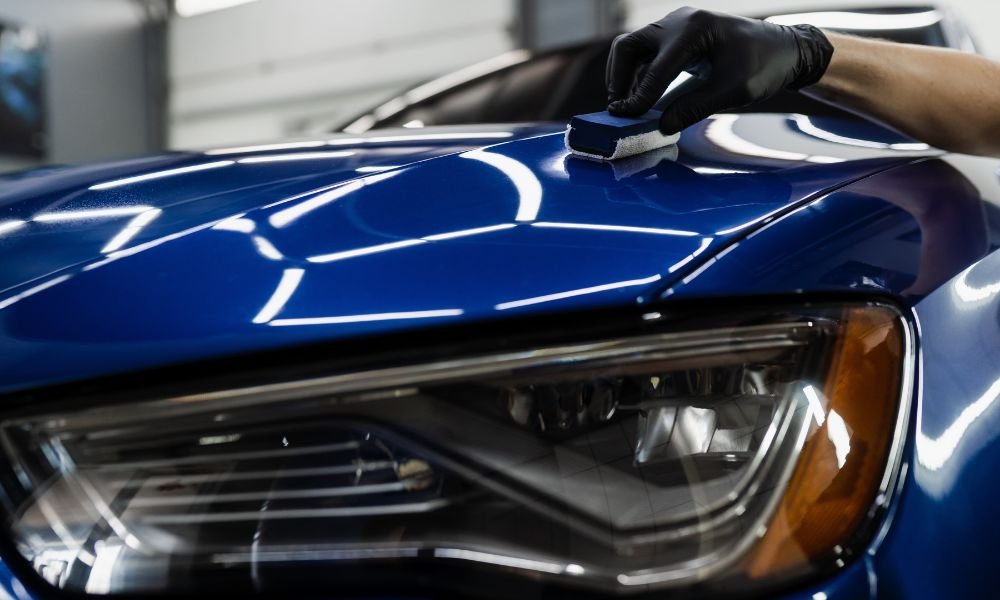Why Ceramic Finishing Is the Ultimate Solution for a Perfect Finish
Ceramic layer has actually emerged as a leading solution for those seeking a remarkable surface for their lorries, many thanks to its impressive sturdiness and safety attributes. This innovative liquid polymer not just bonds perfectly with manufacturing facility paint however additionally offers a powerful obstacle versus common hazards such as scrapes, UV rays, and environmental contaminants. Additionally, its hydrophobic buildings streamline upkeep while enhancing visual appeal. Comprehending how this modern technology compares to conventional approaches and discovering its application nuances can expose even much more about its value. What elements genuinely set ceramic finish apart?
What Is Ceramic Finish?

When applied properly, ceramic coating creates a hydrophobic surface area that wards off water and dust, making it easier to keep and clean. Unlike typical waxes or sealers, which generally supply short-lived security, ceramic finishes can last for several years, relying on the item high quality and application approach. The process of applying ceramic layer needs careful preparation, including complete cleaning and sometimes repaint improvement, to guarantee optimum bonding and efficiency.
Ceramic coatings are not limited to automobile surfaces; they can likewise be utilized on various materials, including glass, steel, and plastics, supplying a versatile option for boosting defense. In general, ceramic finishing stands for a significant development in surface security modern technology, integrating both visual and practical advantages for a wide variety of applications.
Benefits of Ceramic Finish
While lots of surface defense choices exist, the benefits of ceramic finish stand apart as a result of its special homes and durable efficiency. One of the primary benefits is its outstanding durability. Ceramic Coating Philadelphia. Unlike conventional wax or sealants that call for frequent reapplication, ceramic finishes give a resilient layer that can last for numerous years, dramatically decreasing upkeep efforts
An additional noteworthy benefit is enhanced protection against ecological pollutants. Ceramic coverings develop a hydrophobic surface that fends off water, dust, and various toxins, making it simpler to clean up. This function not just preserves the car's look yet additionally lessens the danger of rust and oxidation, especially in severe weather.
Moreover, ceramic finishes provide premium resistance to UV rays, protecting against fading and degradation of paint gradually. This UV protection is important for keeping the aesthetic value of automobiles and surfaces revealed to guide sunshine.
Additionally, the glossy coating achieved with ceramic finishing boosts the total visual allure, providing surfaces a showroom-quality sparkle. Generally, ceramic finishes stand for a considerable innovation in surface area security technology, giving enduring benefits that deal with both practical and visual requirements.
How It Works
Understanding the science behind ceramic finishes exposes just how they provide such impressive protection and durability. At its core, a ceramic layer is a liquid polymer that chemically bonds with the automobile's factory paint.
The application procedure involves multiple actions, consisting of surface preparation, which is critical to achieving ideal adhesion. When applied, the finish undergoes a healing procedure, during which it solidifies and creates a semi-permanent bond with the paint surface area. This bond is what distinguishes ceramic finishings from traditional waxes and sealants, providing a longer-lasting safety obstacle that can sustain for many years.
In addition, the density of the coating can boost its safety high qualities, making sure that it can hold up against extreme problems. Inevitably, the scientific research of ceramic coverings incorporates innovative products with innovative application methods to supply an unequaled level of defense and visual enhancement for lorries.
Contrast With Traditional Methods
When compared to traditional paint defense approaches such as sealers and waxes,The benefits of ceramic finishes end up being particularly obvious. While waxes provide a momentary sparkle, why not check here usually lasting a couple of weeks to a couple of months, ceramic layers offer a long-lasting protective layer that can sustain for numerous years. This durability substantially decreases the regularity of reapplication, making ceramic layers a much more cost-effective option with time.
In addition, standard techniques frequently call for comprehensive prep work and numerous applications to accomplish a satisfactory degree of defense. In comparison, ceramic coverings bond at a molecular level with the car's surface, creating a robust guard against ecological contaminants like UV rays, acid rainfall, and roadway salts. This bond improves the car's resistance to scrapes and swirl marks, which prevail with traditional waxes and sealers.
Additionally, the hydrophobic homes of ceramic finishes push back water and dust, resulting in less complicated cleansing and upkeep. On the other hand, wax and sealant-treated surface areas can attract crud, demanding even more constant washing - Ceramic Coating Philadelphia. Overall, ceramic layers not only supply superior protection yet likewise provide an extra aesthetically appealing and enduring surface, establishing them as the favored selection for critical lorry proprietors
Application and Upkeep Tips

Making use of a foam applicator, apply the covering in little areas, following the supplier's standards concerning density and overlap. Allow sufficient healing time in between coats, typically 24 hours, to make sure proper bonding. After application, it is important to prevent direct exposure to water or rough elements for a minimum of a week to enable the finishing to fully cure.
For upkeep, wash the vehicle on a regular basis with pH-balanced soaps and avoid abrasive products. Touchless car laundries are recommended to minimize scraping. In addition, utilizing a ceramic maintenance spray can improve the finishing's hydrophobic residential properties and longevity. Routine assessments for any kind of indicators of wear will certainly assist keep the coating's integrity and protect that immaculate finish.
Verdict
To conclude, ceramic finishing arises as a remarkable choice for accomplishing a remarkable vehicle surface. Its exceptional durability, safety high qualities, and hydrophobic residential or commercial properties significantly improve the car's appearance while streamlining upkeep initiatives. By creating a robust bond with manufacturing facility paint, ceramic coating efficiently shields against scrapes, UV rays, and ecological impurities. With a life-span expanding a number of years, this advanced option not just protects yet additionally elevates the total aesthetic charm of automobiles, making it an economical investment for automobile enthusiasts.
